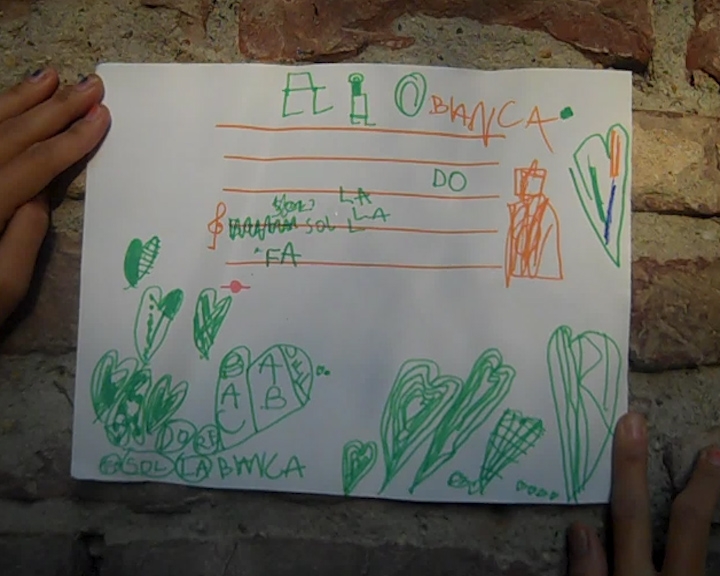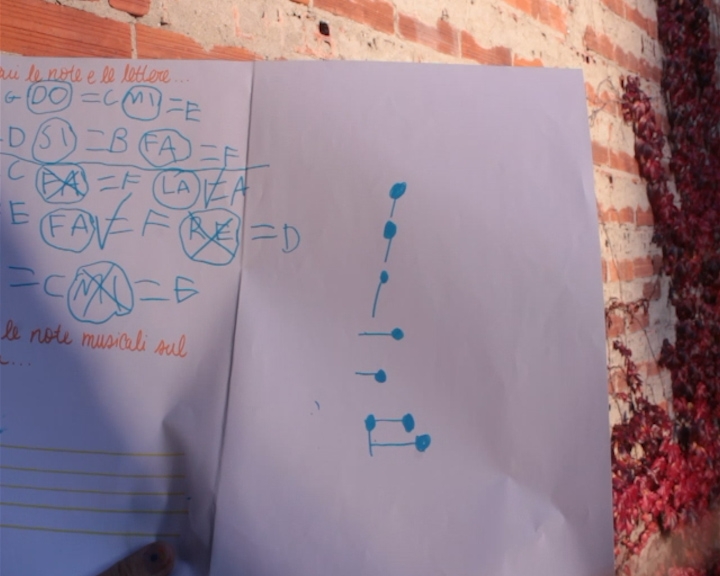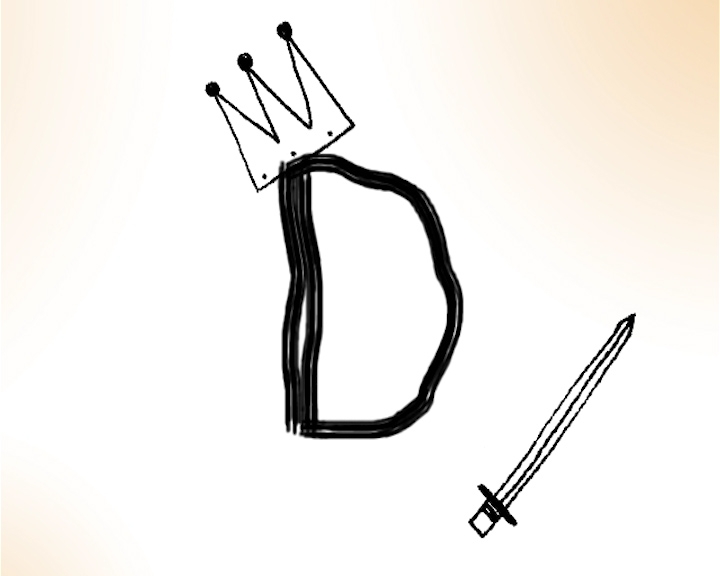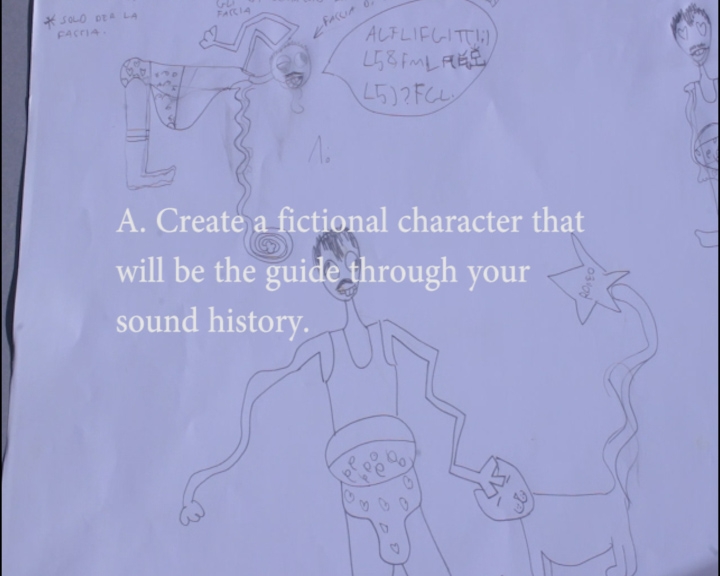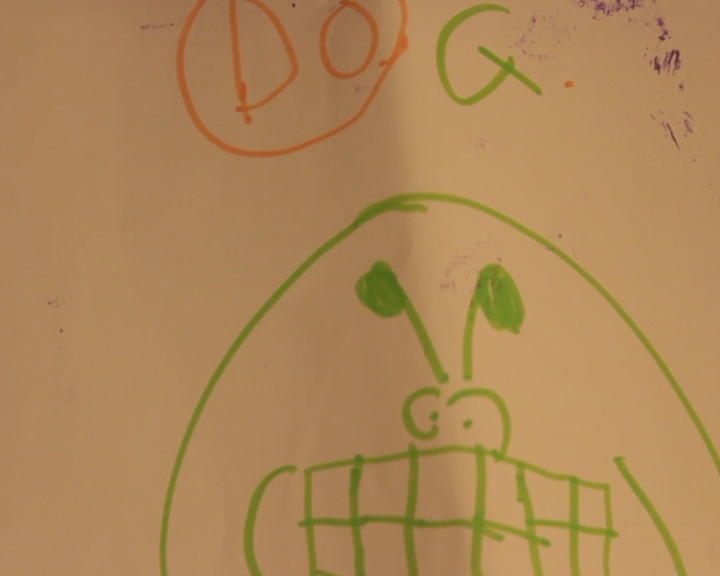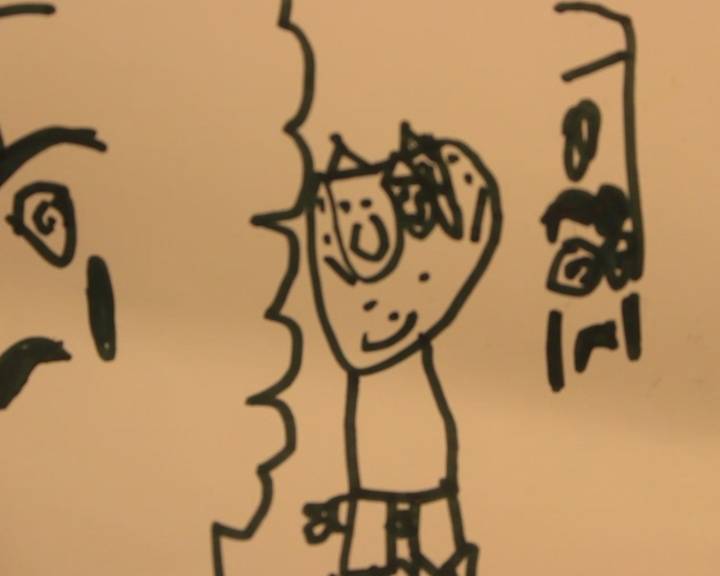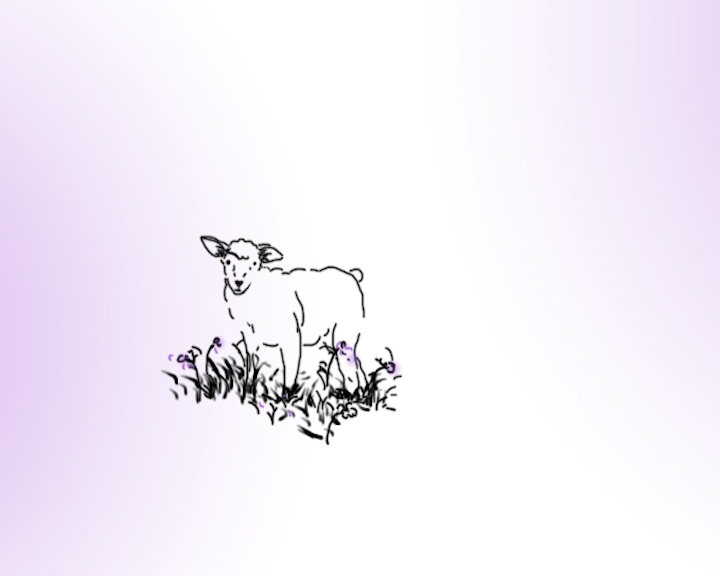Maria Mallol
What is essential is invisible to the eye, but clearer to the ear, to the heart13 November 2020
Online
What is essential is invisible to the eye, but clearer to the ear, to the heart is a new online workshop by musician, songwriter and performer Maria Mallol.
As part of our #almanaccare series, Almanac has invited artist Maria Mallol to reflect on sound as carrier of a non-binary language and as a universal way to express emotions.
Sound creates ties through emotions, digging deeper into a pure way of caring not only for others but for ourselves. As ancient as humanity, as sincere as our most basic responses to feelings, music is a shared magic code and an emotive reminiscence of a future yet to be discovered.
The work comes with a donation call to show support and act with care. All the profits will be donated to www.temblores.org.
Temblores is an ONG based in Colombia that seeks to activate and mobilize community processes of social transformation that put the hegemonic structures that guarantee the maintenance of exclusion, violence, discrimination and the systematic denial of the rights of communities and populations that have historically been marginalized and ignored by the state.
For more information visit their page www.temblores.org
Maria Mallol Moya is a colombian artist based between Turin and Barcelona. Musician, performer, illustrator and music teacher Maria Mallol plays in several projects around europe (LAME, GianniGiublenaRosacroce, Talky Nerds, Space Aliens From Outer Space). Her solo project, DIOTIMA aka NaturaMorta is a field of experimentation through sound and spoken word, researching onto the sensibility of voice as a connector between the material and the abstract world of emotions.
Workshop's script:
WHAT IS ESSENTIAL IS INVISIBLE TO THE EYE, BUT CLEARER TO THE EAR, TO THE HEART
“Here is my secret. It is very simple. It is only with the heart that one can see rightly; What is essential is invisible to the eye.”
Antoine de saint Exupèry.
Introduction
With these words, a wise fox showed once a little sad prince his secret to living life as truth, present and real as he could, looking deep into the act of taking care; the invaluable treasure of creating relations that last through time, a creation of ties that come out of the heart, unconditional and true force, born from the invisible empathy for life, from the will to see rightly through the pure act of love. No image, just the rite of establishing a pact, a pact sealed perhaps in sound, sound that becomes words, words that become responsible for what we have tamed, but tamed us at the same time. A truth that the fox sees forgotten on Man, but the little prince shall never forget, as he makes his way back to his beloved rose.
(intermezzo of a minute with an image that evokes an animal being caressed, fed, a human being caressed, fed)
One may think, through the reflections of the little prince and the fox, that Man neglects the act of taking care, of creating ties healthily through the gesture of minding others' life. The fox reflects on the little rituals that create a relationship between living beings, regardless of their nature; man, animals, plants, they all coexist in a sort of taming condition, that when carried with the heart, with the eyes of love and compassion, bring joy and peace as a sensation of wellness from deep inside our soul. Nurture, grooming, attending, heeding, looking after are gestures of deep understanding of the fragile balance between all ways of life on earth. Inside these gestures we find our voice to be a sacred place of sharing, a mystic power that connects the empty spaces between all material forms. I would like to add to this reflection, a reflection that would lead us to the main topic of this space we are creating to reflect on sound and music, a fundamental truth, as an amulet for the days that come ahead: individualistic thrive, to search for the top, to be the best, to not care, to not look after, to not groom or nurture what surrounds you, especially the life that surrounds you, is to lock yourself up and out on a very cold and lonely peak, a place for “champions”. To the child in me, in you, to you children, in the sake of a Fox and a Little prince, remember: The goal of life is not to be the best, but to give and be your best.
Now, let's give a beginning to this reflection: the reflection of sound as the carrier of a language, sound organized in the concept of music as a universal way to express emotion, create ties through that emotion, and maybe dig deeper into a pure way of caring not only for others but for us, in the protection of a non-binary language like music: emotive, as ancient as humanity, as sincere as our most basic responses to feelings, a magic code between us and a reminiscence of a future yet to be discovered.
Let us reflect on what language we use to communicate what is essential to the heart, what is invisible to the eyes, what we tame, but tames us, without fooling ourselves in the very wasted rhetoric of verbal language, of image, of our wasted ways of speaking through our daily lives without even taking the time to reflect on our most precious instrument: voice. Our voice, evolving with us through time and space, has led us to magnificent places of evolution. We also have created artefacts to conjugate sounds beyond our rational understanding, as if an instinct, a universal voice, was guiding us into the invention of tools for transcending this very dimension, to recreate the divine, even if we don’t understand what the divine is, what celestial bodies mean.
It is in times like this, times where the world seems to bombard us with a draining overflow of information, images and words that collapse into a window of light, that represent our fear for the future, our confused version of the present, our idealized sense of the past, that more than ever there is an urge to look into the abyss of our intimate being and collect the different emotive tonalities that are bloomed in our life, hoping to have a way to handle them and to make them bloom and give light through education and care. We need to exercise the sensibility to reflect on what we are perceiving and, without denial, embrace our feelings and contrast the coldness and sterility of social distancing and an apocalyptic shift on human behaviour: lack of touch, lack of human expression reflected in the purity of the face, the constant fear of an invisible enemy that lies in the very best secretions of the human body, alarming news, that rather than informing populations endorses fear, stress and enslavement. We need to question the way we give information, the way we receive information and maybe try the exercise of communicating through an instinctive, emotive, pure language like sound, like music, without the overuse of concept, of words, of the overlapping of image and speeches in a convulsive flow.
Let's try a little explanation; then an experiment, together. Let's take care of reality in a different way, imagining and shaping our actions from sound, to find through it another way to understand image, writing, communication.
WHAT WE CALL MUSIC.
If one was to search the formal definition of music, these would be the answers:
1.vocal or instrumental sounds (or both) combined in such a way as to produce beauty of form, harmony, and expression of emotion.
2.the written or printed signs representing vocal or instrumental sound.
Music is for each one a very personal conception. To define Music might be to close the doors for an opportunity to understand somebody else’s evolution, somebody else's way of expressing and understanding. Yet music is a ground in which we all reflect and relate, almost in a telepathic way.
Diotima once pointed to Plato: “Reality is perceptible only through one's character (which includes one's desires and prejudices and one's limited understanding of logic). Man moves through the world of Becoming, the ever changing world of sensory perception, into the world of Being-the world of forms, absolutes and transcendence. Man transcends his place in Becoming by Eros (love), where man reaches the Highest Good, an intuitive and mystical state of consciousness”.
If one was to think of Music as the voice of beauty, of love, it would always serve it's purpose of carrier of that mystical state of consciousness, the purpose of helping us transcend. Music is a word that means much more than what we can understand. Its magic resides in its capacity to elevate, to arouse, to dig deep into our most intimate corners, and yet, Music has the power to connect us not only with other living beings but as well with the entire universe through the physical phenomena of waves vibrating through this.
“Music...” as Leyla Pillai said “ is the picture of our beloved... “ But, what is our beloved? Its that shine that emanates from inside, source of light and inspiration, and at the same time, as she explains “... it's our goal”. That is why, without really knowing it, we love music. We reflect on it, and the perfect mechanism of the universe is pictured on it. Music is the language of the soul. It's the key tool to create a state of transcendence between reality and the unknown, the heavenly. As ancient as humanity. It's said the oldest artefact conceived to emit sound appears in the archaeological record around 40,000 years ago. I would like to think there is an even older one, one that is around 2,4 million years old and that was given as a gift, or a super-power perhaps. One that allowed us to do incredible magic tricks, as we evolved into more complex beings: our voice. Voice is our first approach to sound, to express emotions, and creating the blocks through which we built the very base pillars of communication. Vocal communication of emotions is an everlasting biological adaptation for socially living species and has been evolving with us constantly. Voice is our carrier signal, making emotion evident to the ear, to the heart, our first encounter with music.
THE LANGUAGE OF MUSIC
Sound, in its formal musical way, has had a trajectory evolving through time and history: from the primitiveness of voice and the first human using it as an instrument, mimicking sounds of nature, or even the sounds of society around us, it was not until a man called Pythagoras paid close attention to the vibration of a chord, that we had the first formal theorisation of sound through what we now know as notes:
Legend states that one day Pythagoras was walking past a smithy’s workshop, listening to the sound of the blacksmith’s hammers on the anvil. He turned his attention to the percussive sound that was produced and noted that some strikes sounded much higher than others. He was certain that there was a mathematical explanation for the different pitches he was hearing. So he entered the smithy’s shop and observed that they were using different sized hammers. Some of the hammers were large and others smaller, but they were ratios of each other: one being twice the size of another one, one being two-thirds the size of the last. Pythagoras declared these relationships as absolute intervals of music. As much of a legend, regardless of it's legitimacy, what we do know is that the great mind of this wise mathematician understood that a string exactly half the length of another will play a pitch that is exactly an octave higher when struck or plucked. Split a string into thirds and you raise the pitch an octave and a fifth. Spilt it into fourths and you go even higher. This concept is known as the overtone series or harmonic series and it is a feature of physics, affecting waves and frequencies in ways we can see and hear and ways we can’t. Another genius understanding he learned about sound is even more revealing of the nature of it, of music:
Pythagoras believed that the planets themselves, all heavenly bodies, rang out notes of vibration based on their orbit and distance to each other. We humans simply lack the ability to hear this music of the spheres, but as much as it is invisible, it might not be inaudible and it might have a constant and direct influence in the way we move through reality, don’t you think? It has for sure affected the way we have developed writing music. These mathematical ratios helped to define every system of intonation throughout history. In other words, we tune our modern-day instruments using the mathematics that Pythagoras discovered almost 2,500 years ago, with the fair adjustments of temperament the master J.S. Bach gave to them around 1722 and 1742 in a series of works named The Well-Tempered Clavier, officially claiming an adjustment on the minor and major in order scale to be able to play them without having to change the tune of the instrument, correcting the “errors” on the tuning of Pythagoras.
A series of codes, figures that symbolize what we can express to music have been devolved through history to be able to transmit our musical ideas. Musical notation, in its formal sense, is any system used to visually represent aurally perceived music, played by both voice and instruments. Musical notation as any living language has changed between cultures and through history, and modernity knows little about the ancient ways of transmitting written music. From antiquity to our days, musical writing shows the infinite and diverse modes we search into both transmitting and expressing a message, in this case, a sound message.
Without going further into explanations of historical context, let us get immersed in the experimentations with sound, with music, and the idea of expressing emotions, stories of our inner self, through this transcendental way of communication.
SCALES, NOTES AND THEIR EMOTIONS
C major
Completely pure. Its character is: innocence, simplicity, naïvety, children's talk.
C minor
Declaration of love and at the same time the lament of unhappy love. All languishing, longing, sighing of the love-sick soul lies in this key.
D major
The key of triumph, of Hallelujahs, of war-cries, of victory-rejoicing. Thus, the inviting symphonies, the marches, holiday songs and heaven-rejoicing choruses are set in this key.
D minor
Melancholy womanliness, the spleen and humours brood.
E major
Noisy shouts of joy, laughing pleasure and not yet complete, full delight lies in E Major.
E minor
Harrowing, melancholic, clear.
F major
Complaisance & calm.
F minor
Deep depression, funereal lament, groans of misery and longing for the grave.
G major
Everything rustic, idyllic and lyrical, every calm and satisfied passion, every tender gratitude for true friendship and faithful love,--in a word every gentle and peaceful emotion of the heart is correctly expressed by this key.
G minor
Discontent, uneasiness, worry about a failed scheme; bad-tempered gnashing of teeth; in a word: resentment and dislike.
A major
This key includes declarations of innocent love, satisfaction with one's state of affairs; hope of seeing one's beloved again when parting; youthful cheerfulness and trust in God.
A minor
Pious womanliness and tenderness of character.
B major
Strongly coloured, announcing wild passions, composed from the most glaring coulors. Anger, rage, jealousy, fury, despair and every burden of the heart lies in its sphere.
B minor
This is as it were the key of patience, of calm awaiting ones's fate and of submission to divine dispensation.
From Christian Schubart's Ideen zu einer Aesthetik der Tonkunst (1806) translated by Rita Steblin in A History of Key Characteristics in the 18th and Early 19th Centuries. UMI Research Press (1983).
USING SOUND, NOTES AND SCALES AS A WAY TO REINTERPRET REALITY, AND TRANSLATE EMOTION.
After listening to the major and the minor scale, and consequently with some of the reflections we have had, let us now try to practice the translation between sound, music, reality and images.
Ex No.1
Perception of reality and the influence of sound on it:
1.Let's take a look at this scene, under the influence of three different kinds of soundtracks.
2.Note at least three adjectives while watching each one.
3.Compare the different results and reflect on how much music has changed the perception you had of the same scene.
Ex No.2
Landscaping through sound: Let your ears be your eyes.
While hearing the next two tracks, try to imagine a landscape out of the images, colours and shapes these sounds awake in you.
The first track is made by instruments, the second is made by nature.
Let sound guide you into a landscape of your own and transport you into a reality far away from this.
Ex No.3.
The translation between feelings and sound helped by the major and minor scale: a story of one's inner self.
A. Create a fictional character that will be the guide through your sound history.
Guided by the explanations of notes and scales previously showed in the video try to articulate a story for your character.
Here is a link in which you can find some great synths to play online:
https://synth.playtronica.com/
B. If you have something to say, try saying it with an emotive score:
Write a letter using chords or notes and nothing else, address your feelings through sound if words are not enough! Look deep into your emotional state and how you want the other person to understand it writing only notes or chords onto the paper. Don't worry about formality: writing the name of the chord will be enough for the other person to play them.
All the drawings and paintings presented in this work were made by a group of students aged between 4 and 11years in Turin, Italy.
The material presented here is the result of a year of musical reflection and practice held by a group of students guided by their teacher Maria Mallol Moya into musical emotivity, notation and creative musical writing, in the search of a new way to understand music and its different qualities for expressing emotion. The goal is addressing musical education from feelings and personal narrative rather than only technique. In all cases and without exception, the search for a better way of expressing each own's story and feelings has led to an instinctive and much more voluntary search of better techniques into music theory and development.
With everlasting love to my students Anahi, Bianca, Giordi, Theo, Elias, Toby, Jacopo, Romeo, Santi, Anita e Cesare, for their amazing capacity of seeing the world through the eyes of love, compassion and music, and their unique will to transform it into a bright place to exist.
Special and bright thanks to Guido, Isid, Xuein and Alfy for their unconditional love and support. The kind of treasure the Fox, the little Prince and Antoine de saint Exupèry taught me to cherish the most in life.
What is essential is invisible to the eyes, but clearer to the ear, to the heart written, developed and narrated by Maria Mallol Moya.
Footage, edition and animation by LA SIESTA ES MI FIESTA. (Maria Mallol Moya and Xuein Caceres)
Turin 2020
All rights reserved.
The project is supported by Arts Council England Grants for the Arts.


